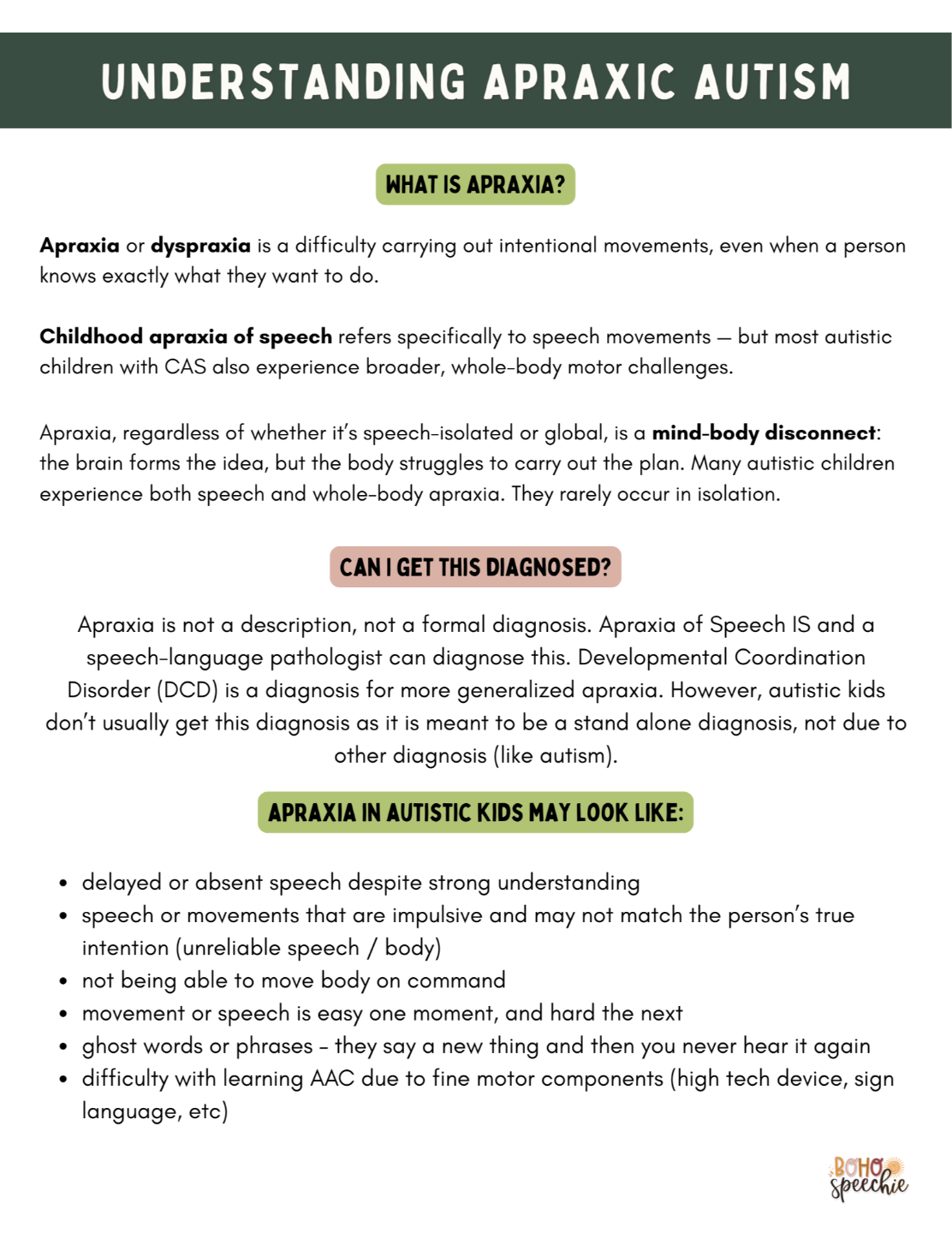Is My Child a GLP?
Wondering if a child might be a gestalt language processor—especially if they’re minimally speaking? This quick 1-page checklist helps you recognize common signs of gestalt language processing in both speaking and minimally speaking children. Use it to guide your observations, inform your support strategies, and educate others. Perfect for SLPs, educators, and parents.
Dyspraxia Discussion Freebie
Autistic kids are constantly mislabeled—and it’s not always intentional. Most of the time, it comes from a lack of understanding about dyspraxia and how it impacts communication and movement.
The truth? Many of the “behaviors” people judge are actually motor planning challenges, not defiance or disinterest.
Let’s change the narrative. This freebie breaks down what dyspraxia really is—and why we need to rethink these harmful labels.
Sensorimotor Play Handout
This PDF, "Beyond the Toy Box: The Power of Sensorimotor Activities," explains why traditional toy-based therapy may not meet the needs of minimally speaking autistic children. It advocates for sensorimotor play as a powerful way to support regulation, connection, and the foundations of communication. The guide includes examples of sensory-rich activities and outlines therapy goals focused on co-regulation, shared engagement, and joy-filled interaction.












